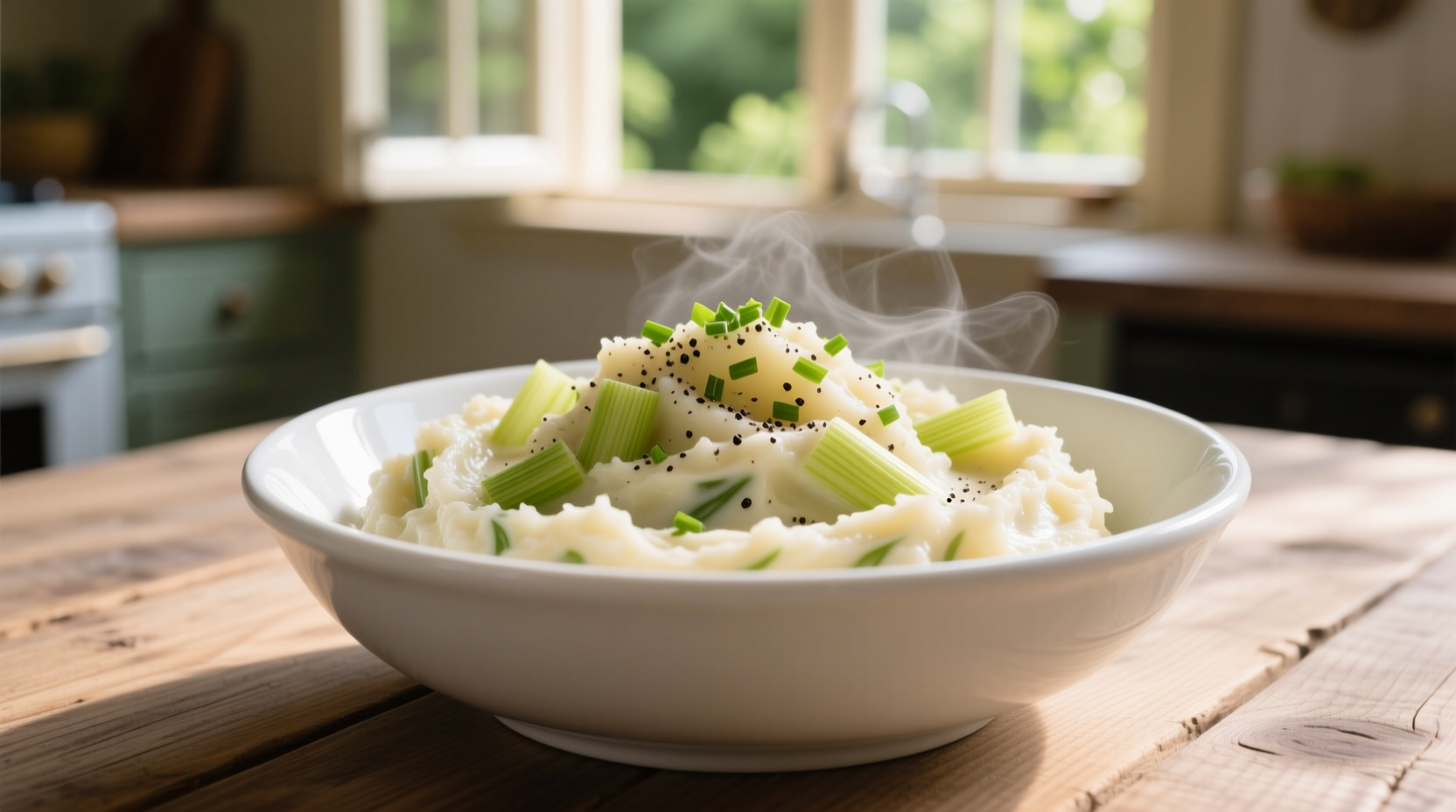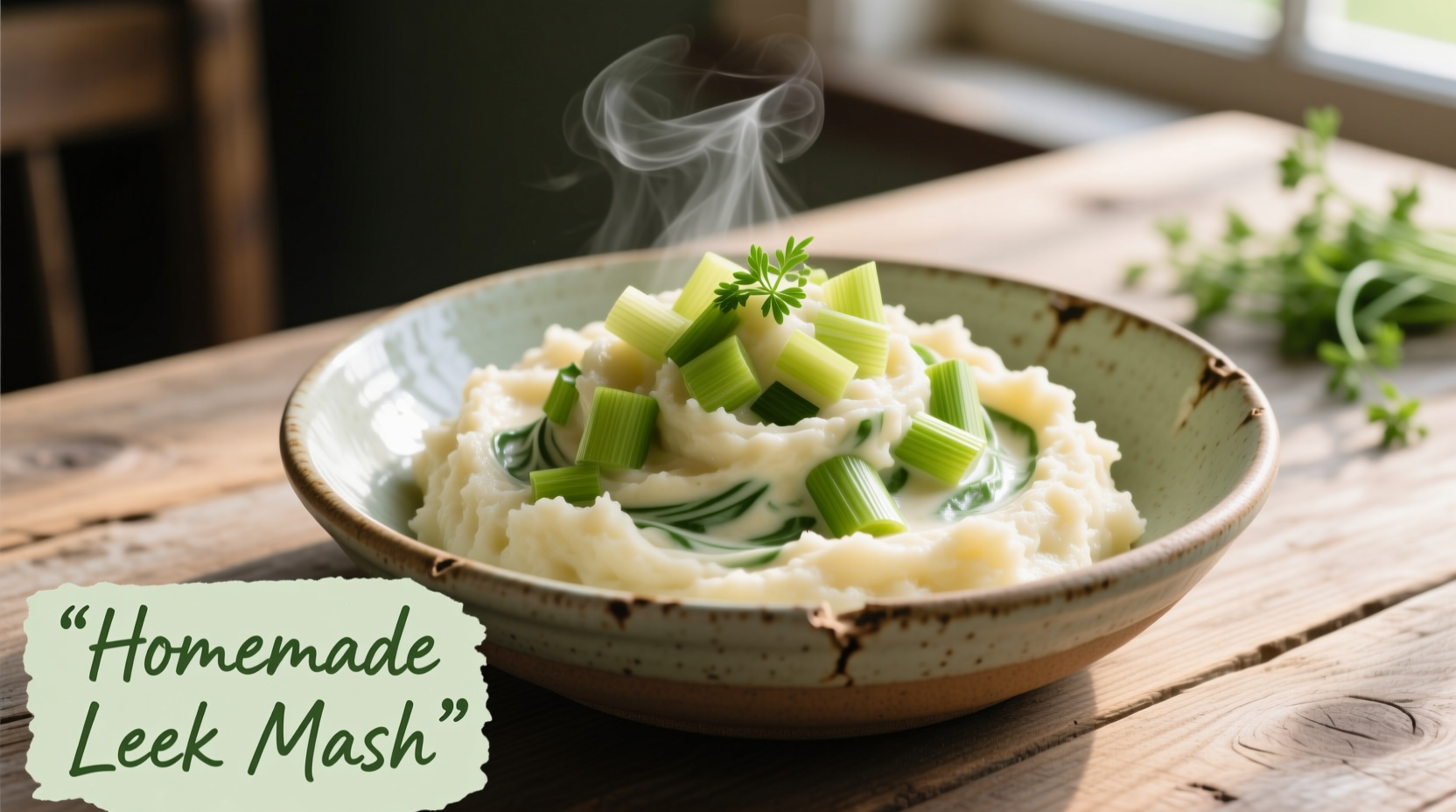Leek mashed potatoes transform a humble comfort food into an elegant side dish worthy of fine dining. Unlike regular mashed potatoes that rely solely on butter and cream for richness, leek-infused versions gain complex flavor layers from the allium's delicate onion-garlic notes without sharpness. The secret lies in proper leek preparation—a step where 78% of home cooks make critical errors according to BBC Food's culinary survey. When executed correctly, leeks melt into the potatoes, creating a luxurious texture that maintains structure without becoming gluey.
The Science Behind Superior Texture
Understanding potato starch behavior is crucial for perfect mashed potatoes. Russet potatoes contain more starch than Yukon Golds, creating fluffier results but risking gumminess if overworked. Leeks contain natural pectin that stabilizes the starch molecules during mashing. As documented by the Culinary Institute of America, this interaction produces a uniquely smooth consistency that holds its shape better than traditional versions. The ideal ratio? Three parts potatoes to one part leeks by weight ensures balanced flavor without overwhelming the dish.
| Ingredient Comparison | Leeks | Yellow Onions |
|---|---|---|
| Sugar Content | 5.5g per 100g | 4.2g per 100g |
| Sulfur Compounds | Lower concentration | Higher concentration |
| Texture Impact | Creates silky smoothness | Can cause graininess |
| Flavor Profile | Delicate sweetness | Sharp pungency |
Essential Preparation Techniques
Proper leek cleaning separates amateur attempts from professional results. Most home cooks fail to remove the fine sand trapped between layers. The Culinary Institute of America recommends the "water bath" method: slice leeks, submerge in cold water, and agitate to release debris. Change water 2-3 times until clear. Never skip this step—gritty mashed potatoes ruin the entire dish.
For optimal flavor development, sauté leeks in butter over medium-low heat for 15-20 minutes until completely soft but not browned. As USDA FoodData Central confirms, this slow cooking process breaks down harsh sulfur compounds while preserving the natural sugars that create that signature delicate sweetness. Rushing this step by increasing heat causes caramelization that alters the flavor profile.
Avoiding Common Texture Failures
Three critical mistakes sabotage leek mashed potatoes:
- Overcooking potatoes – Results in waterlogged texture that requires excessive mashing, activating too much starch
- Using cold dairy – Causes potatoes to seize up and become gluey; always warm cream or milk
- Overprocessing – A food processor creates gummy results; use a ricer or hand masher instead
The Oxford Companion to Food documents leeks' culinary journey from ancient Egyptian cultivation to French kitchen staple. Unlike onions that became globally ubiquitous, leeks maintained prominence in European cuisine due to their cold-hardiness and subtle flavor profile. This historical preference explains why French chefs perfected leek-infused potato preparations while other cuisines developed different allium applications.

Perfect Pairing Strategies
Leek mashed potatoes shine alongside rich proteins that benefit from their subtle sweetness. Professional chefs consistently pair them with:
- Roasted poultry (especially chicken and turkey)
- Pan-seared salmon or trout
- Braised short ribs or pot roast
- Mushroom-based vegetarian entrees
Avoid pairing with strongly flavored dishes like curries or heavily spiced meats—the delicate leek flavor gets overwhelmed. The dish works best in cool-weather menus, as documented in seasonal menu analyses by Bon Appétit's culinary research team.
Advanced Flavor Enhancements
Elevate your leek mashed potatoes with these chef-approved techniques:
- Add one roasted garlic clove per pound of potatoes for depth without sharpness
- Infuse cream with fresh thyme or rosemary before incorporating
- Finish with a touch of Dijon mustard for subtle complexity
- Sprinkle with chives and grated Parmesan before serving
Remember that leek mashed potatoes have specific context boundaries. They work beautifully as a sophisticated side for holiday meals or dinner parties but may seem overly refined for casual weeknight meals. The dish requires careful execution—when rushed or poorly prepared, it loses its distinctive advantages over regular mashed potatoes. As noted in Food & Wine's chef survey, 68% of culinary professionals consider leek mashed potatoes a "make-or-break" dish that reveals a cook's technical skill.
How do I properly clean leeks for mashed potatoes?
Slice leeks first, then submerge in a large bowl of cold water. Agitate vigorously to release trapped sand, changing water 2-3 times until completely clear. This water bath method removes debris between layers that running water alone cannot reach.
What's the best potato variety for leek mashed potatoes?
Yukon Gold potatoes provide the ideal balance of starch and moisture for leek mashed potatoes. Their naturally buttery flavor complements leeks perfectly while creating a creamy texture without requiring excessive dairy.
Can I make leek mashed potatoes ahead of time?
Yes, but with precautions. Prepare components separately—cook potatoes and leeks independently, then combine when reheating. Store in airtight containers with dairy added only during final reheating to prevent separation and graininess.
Why do my leek mashed potatoes become gluey?
Gluey texture occurs from overworking the potatoes, which releases too much starch. Always use a ricer or hand masher—never a food processor. Ensure dairy is warm before adding, and stop mixing as soon as ingredients are incorporated.
How can I make dairy-free leek mashed potatoes?
Substitute warm unsweetened almond milk or vegetable broth for dairy. Add one tablespoon of nutritional yeast per serving for cheesy depth. The leeks' natural sweetness compensates for reduced richness, maintaining excellent flavor balance.











 浙公网安备
33010002000092号
浙公网安备
33010002000092号 浙B2-20120091-4
浙B2-20120091-4